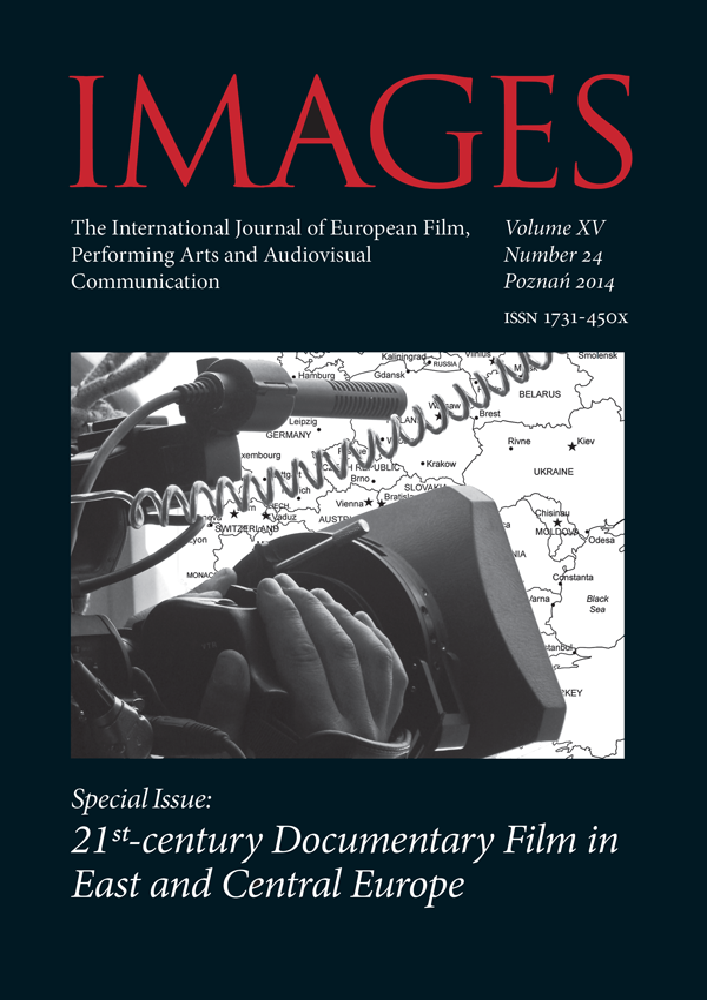Abstrakt
Owing to the disappearance of grand narratives in postmodernism, contemporary documentary has become concerned with personal and collective historical traumas. This paper focuses on the documentary filmmaker’s challenge concerning the treatment of traumatic experience and the re-construction of historical events. It examines the filmmaker’s position in her own film and her attitude towards her subjects in documentaries on historical and personal trauma in the framework of a case study. The film analysed is Balkan Champion (2006), which launched a new trend in Hungarian documentary cinema, touching on sensitive issues in the collective memory of the nation that include the striking, controversial involvement of the fi lmmaker herself. Réka Kincses has made an empathic but highly critical portrait of her own father, the one-time political leader of the Hungarian ethnic minority in Romania, which evolved into a portrait of the interethnic conflicts between Romanians and Hungarians, and the political confl icts arising from the Eastern European transition from communist dictatorship to democracy, as well as their traumatic consequences on the life of an ethnic Hungarian family in Romania. Th e fi lmmaker not only confronts her father with his own failure both as a politician and a father, but also challenges her mother’s chauvinism and careerism. The parents’ opinion about and emotional reactions to the Romanian ethnic majority represent the long-term eff ect of the historical trauma of the treaty of Versailles (1921) and the wounds this left on the collective psyche of the Hungarian nation. A close analysis demonstrates that, on the one hand, the filmmaker’s first-person interactive techniques helped to reveal the repeated ideological, behavioural and emotional patterns rooted in the historical traumas of Hungarian ethnic minority groups in Romania; on the other hand, these techniques prove to be controversial due to the director’s constant shifting between positions outside and inside her own family and her refusal to take the responsibility that the inside position would involve.Bibliografia
A. Meek, Trauma and Media, London 2010, p. 32.
A. Huyssen, “Trauma and Memory: A New Imaginary of Temporality”, in: World Memory: Personal Trajectories in Global Time, eds. J. Bennett, R. Kennedy, New York 2003, pp. 16–29.
E.R. O’Neill, “Traumatic Postmodern Histories: ‘Velvet Goldmine’s Phantasmatic Testimonies”, Camera Obscura 57, vol. 19, no. 3, p. 157.
D. Laub, S. Felman, Testimony: Crises of Witnessing in Literature, Psychoanalysis, and History, New York 1992, p. 59.
Romániai magyar irodalmi lexikon [Encyclopaedia of Hungarian Literature in Romania], ed. D. Gy, Erdélyi Múzeum Egyesület and Kriterion Könyvkiadó, Kolozsvár 2002, <http://mek.oszk.hu/03600/03628/html/k1.ht m#KincsesEl%C5%91d>.
F. Udvardy, A romániai magyar kisebbség történeti kronológiája 1990–2006 [Historical Chronology of Hungarian Ethnic Minority in Romania 1990–2006] <http://udvardy.adatbank.transindex.ro/index.php?action=ev&ev=1990>.
Király, K. Béla, “Th e Hungarian Minority’s Situation in Ceausescu’s Romania”, trans. C. Tennant, Atlantic Studies of Society in Change, no. 68, 1994,http://www.hungarianhistory.com/lib/humis/humis00.htm.
M. László, C.Z. Novák, A szabadság terhe, Marosvásárhely, 1990 március 16–21 [Burden of Liberty,Târgu Mureş, 16–21. March 1990].
Dr. Bernárdy György Közművelődési Alapítvány – Pro-Print Könyvkiadó, 2012, p. 285.
<http://www.hrw.org/reports/1990/WR90/HELSINKI.BOU-02.htm>.
P. György, Állatkert Kolozsváron. Képzelt Erdély. [Zoo in Cluj. Imagined Transylvania], Magvető, Budapest 2013, p. 128.
Licencja
Copyright
© 2014 Uniwersytet im. Adama Mickiewicza w Poznaniu
OPEN ACCESS
